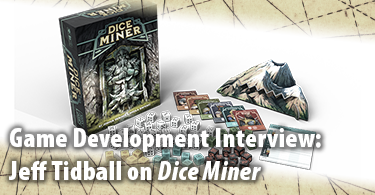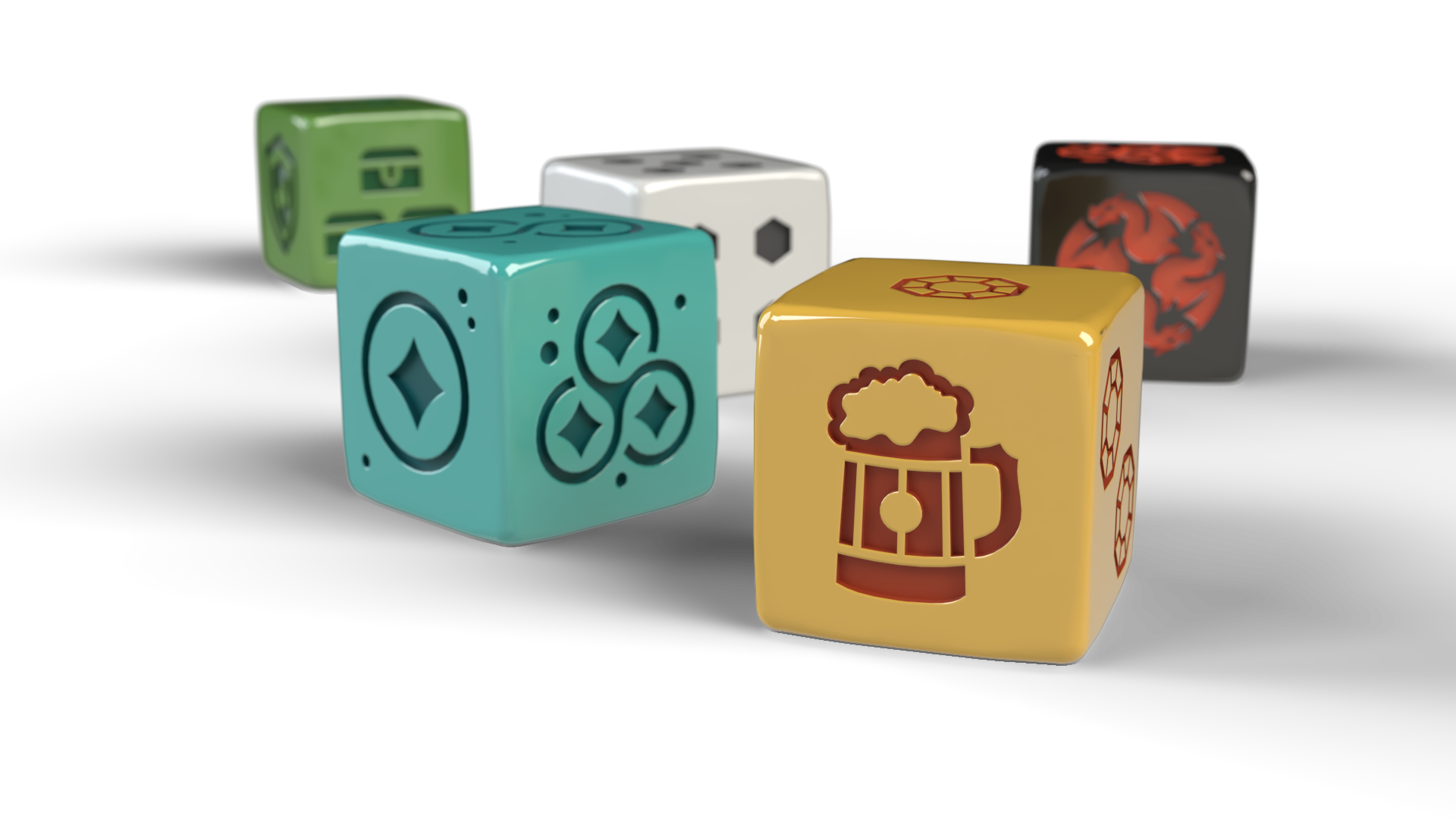Game Development Interview: Jeff Tidball Discusses Dice Miner

Today, we're interviewing Jeff Tidball, the producer/developer for Dice Miner. He shares his behind-the-scenes insight on budgeting, specifying custom components, and one-sheets that catch a publisher's eye. Whether you're interested in Dice Miner for its gameplay or development (or both!) we think you'll learn something from this post.
Dice Miner is live on Kickstarter right now!
What caught your eye about Dice Miner?
Lots of the games we work on at Atlas Games are blind submissions. They arrive through the infamous “slush pile” of game pitches sent to us by designers we’ve never met.
That’s how Dice Miner came to Atlas. The Dice Miner one-sheet caught my eye because of its description of its unique mountain component. A physical object like that is often a production challenge, but where the challenge can be solved, that process is rewarded by a game with a unique selling point. Both of these things turned out to be true about Dice Miner.

What were the challenges in getting the Dice Miner components produced?
Atlas Games is a relatively small game publisher. Whereas some publishers have in-house staff with specialized production skills and equipment to help them consider and produce iterating prototypes of novel physical objects, our expertise is more in narrative storytelling and traditional publishing forms like books and cards.
But the real challenge isn’t in simply paying a factory to mass-produce physical objects. Any goofball with a checkbook can do that. The difficulty lies in making sure it can be done in a way that will break even in almost any case, profit in most cases, and preserve the capacity for high upside if the game breaks out. (And all of that sets aside completely the question of whether gamers will want the game in the first place!)

In the case of Dice Miner, that iterative budgeting process took two years or more of quotes, consideration, conversations, and spreadsheets. And even once a proof-of-concept budget bore out the break-even and profit scenarios, further iterations streamlined those concepts to the parallel Standard Edition and Deluxe Edition offerings, with their punchboard and molded plastic mountains, that you see today in the Dice Miner Kickstarter. My former Fantasy Flight Games co-worker Jason Beaudoin, who joined the Dice Miner team as a production consultant, was instrumental in this process.
What’s fun about playing Dice Miner? How did the design develop?
Personally, I love that the turn-by-turn decisions in Dice Miner are straightforward. That is, the number of dice available to draft at any given time — the dice that are “on top” of the mountain — is pretty limited. But the way those dice have the potential to combine with the dice you’ve previously drafted can have a great impact on your score. Tunnel dice combine in straights for outsize values, the multiplying effects of tools and hazards can be huge (but also, potentially dangerous), and the race between players to have the most treasure (because only one player can double those points) are all examples of solid gameplay created by designers Josh DeBonis and Nikola Risteski. Take it from me, crafting a game where deeper strategies arise from simple choices is harder than it looks.
The relatively small number of rules that were changed in the development process built on that strong foundation. The original prototype allowed players to spend Beer dice in order to take two picks; allowing those picks to come from the side of the mountain was a change first seriously playtested at Protospiel Minnesota in January 2019. That change ultimately reinforced the importance of the mountain component in allowing the dice to physically slide into place after those picks.

The addition of heroes to the game arose from my visit to Josh and Niko in Brooklyn after Metatopia that same year. We were talking about a particular problem we had observed in that day’s playtest. We had noticed that particularly un-fun circumstances could arise at the end of the first round of a four-player game. One possible solution to that very narrow problem led, in a relatively straight line, to the hero cards you see in the release edition of the game. The heroes add so much at all player counts that now, it’s hard to imagine the game without them.
But past those factors, there’s this: Rolling dice is fun, and Dice Miner leans into it. You roll your dice to start the round, you roll dice onto the mountain before drafting them, and there’s a high-stakes, push-your-luck Magic phase before scoring in every round where every player has a last chance to make the most of the dice showing in their hoard.
Ultimately, it all comes together into a fun package that’s different from anything else on the market. I’m really proud to have been involved in bringing Dice Miner to gamers.
